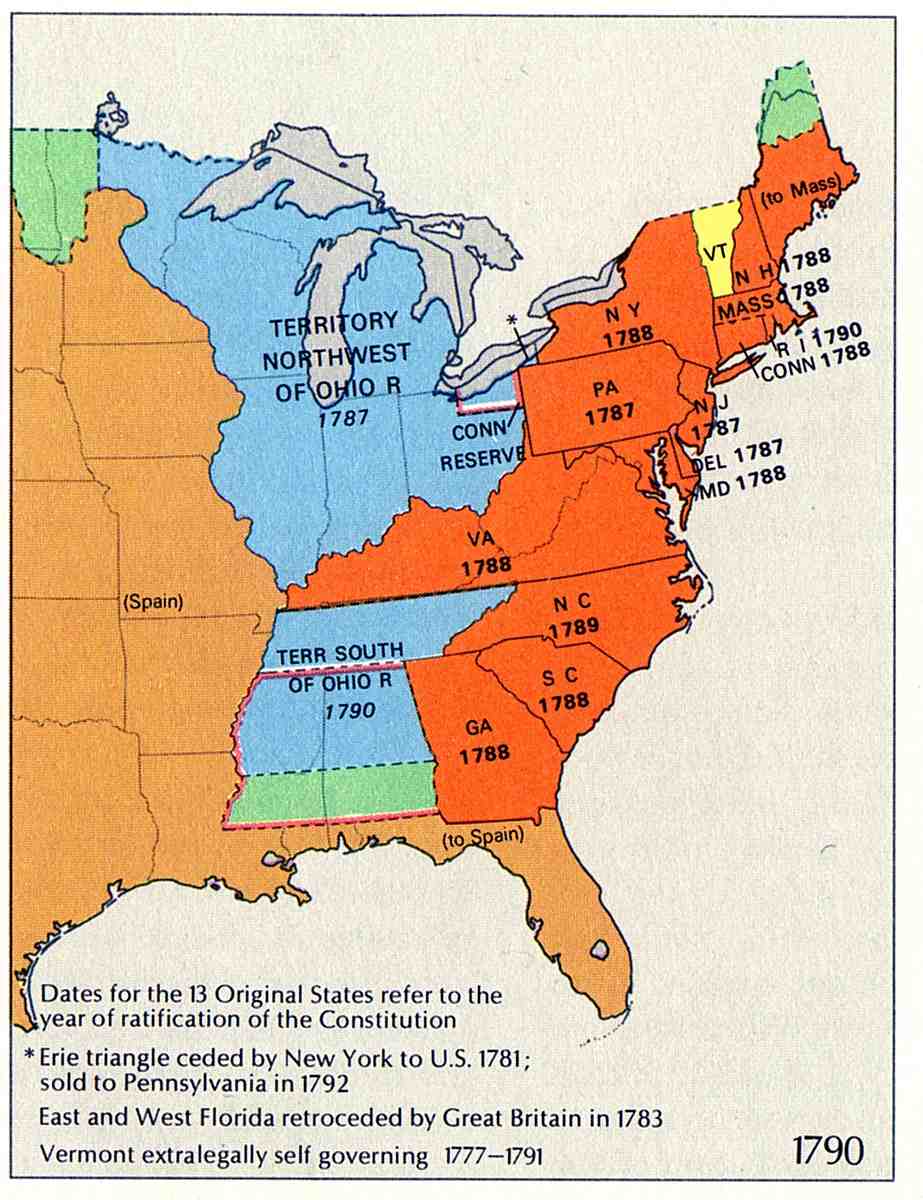This module is for Grades: 6-8 Welcome
In the early years of the United States, the new government dealt with many challenges. While the Revolutionary War was still being fought for independence from Great Britian, the Continental Congress created a constitution for the new nation called the Articles of Confederation in 1781. The Articles created a weak central government and gave most of the power to the original thirteen states to govern themselves. There were a few important accomplishments under the Articles of Confederation, including the ogranization of new western territory.
The process for settling, organizing and creating states out of western territories in today’s midwest region was created by the Land Ordinance of 1785 and the Northwest Ordinance of 1787. In this module you will examine the historical process of the settlement and statehood of western lands under the ordinances of 1785 and 1787.
Module Objectives
By the end of this module, you will be able to:
- Explain key steps in important processes of early U.S. government.
- Identify processes in early U.S. history, including how a territory becomes a state.

One of the important accomplishments in the early years of the United States was the process involved in the organization of new western territory. This map shows the United States territory in 1790.
Image credit: National Atlas of the United States via Wikimedia CommonsOpens a new window
Focus Standard
RH.6-8.3 – Identify key steps in a text’s description of a process related to history/social studies (e.g., how a bill becomes law, how interest rates are raised or lowered).
Skill
- Analyze how key historical processes are explained in historical documents.








